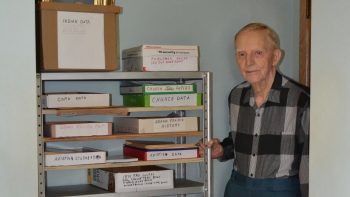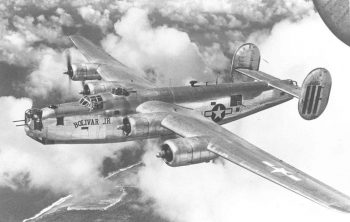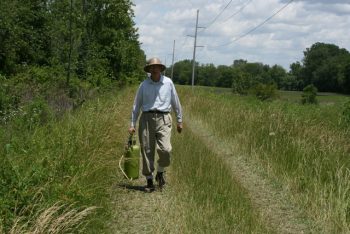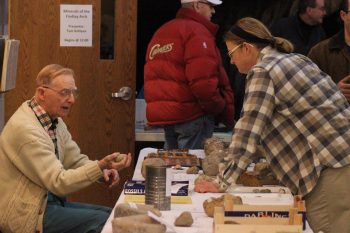 A Century of Marion History
A Century of Marion History
Kensel Clutter is a fascinating man, in the way that people driven by curiosity are often fascinating. Since his retirement from farming—and a stint co-piloting B-24 bombers in World War II—he has devoted his time, in large part, to the study, research, and documentation of local Marion history. His impressive body of work is a testament to the motivating power of curiosity.
One of Clutter’s passions is the history, geography, and biology of prairie lands, specifically the Sandusky Plains of North Central Ohio. Marion County sits in the middle of what was once 185,000 acres of vast prairie that served was a landmark for indigenous peoples, soldiers, trappers, and settlers. Clutter’s research produced the first colored map of the Sandusky Plains and, in doing so, discovered numerous accounts of Native American trails among the 1,000-miles of the original survey records. Noting that he was born just 100 years after the area had been taken by treaty from the Native Americans, the trails became a major focus of his research. The products of his documentation now reside with the Marion County Historical Society.
 Clutter’s own history started with his birth in Kirkpatrick, Ohio, in 1919. His decades in Marion were only interrupted by his time as a pilot in WWII. Clutter piloted bombers in the Central Pacific Theater and, after the attack on Pearl Harbor, his duty included covering hundreds of miles of ocean, searching for submarines and ships of a possible invasion fleet.
Clutter’s own history started with his birth in Kirkpatrick, Ohio, in 1919. His decades in Marion were only interrupted by his time as a pilot in WWII. Clutter piloted bombers in the Central Pacific Theater and, after the attack on Pearl Harbor, his duty included covering hundreds of miles of ocean, searching for submarines and ships of a possible invasion fleet.
Saving up his military pay enabled him to purchase 176 acres in eastern Marion County upon his return. Initially, due to the lack of available farm machinery post-war, he worked as a stone truck driver for a neighbor. Three years later, he was able to finally purchase a tractor, and a year after that, marry his Prospect sweetheart, Opal Schmidt. Together, they farmed the land and completed a house, where they would raise their three children.

While he hasn’t lived more than 10 miles from his birthplace, he is fascinated by the history around him. He collaborates closely with the county’s Historical Society to preserve and publish his work. His research has connected him with students from Ohio State Marion who work to preserve local prairie land and experts from the Ohio Prairie Conference. In the past 32 years since his retirement, Clutter has completed more than 4,000 hours voluntarily maintaining the Claridon Prairie and Green Camp’s Romine Prairie.
From the prairie gardens on his farm, Clutter has donated seeds and plants to prairie preservation and reconstruction projects at Ohio State Marion, area schools, the Tallgrass Trail, Crawford Parks District, Big Island Wildlife Area, and the Governor’s Mansion in Columbus.
 It turns out his prairie work, which led to his research on the Native American trails, is but a faction of the projects in which he has invested himself. Among his writings at the Marion County Historical Society are histories of Scott and Grand Prairie townships, a book on the Owl Creek Trail, and more than a dozen pieces on local aviation history. And, at 99 years old, he isn’t finished. Continuously fueled by his boundless curiosity, Clutter is working to finish multiple ongoing projects.
It turns out his prairie work, which led to his research on the Native American trails, is but a faction of the projects in which he has invested himself. Among his writings at the Marion County Historical Society are histories of Scott and Grand Prairie townships, a book on the Owl Creek Trail, and more than a dozen pieces on local aviation history. And, at 99 years old, he isn’t finished. Continuously fueled by his boundless curiosity, Clutter is working to finish multiple ongoing projects.
Utilizing his own experience and expertise as a former military pilot, Clutter has contributed to the historical society histories of early aviation and private airfields in Marion County—including the Holland Road airport, Pole Lane Road airport, and a “little known and almost forgotten” Air Force Depot on Likens Road, a book on civilian pilots, collections of data on airplanes manufactured in Marion County in the 1920s, data on local men who served in aviation for each of the Armed Forces in WWII, and a book about his own WWII service and aviation stories, edited by MCHS president Randy Winland.
And if this was not enough, the prolific historian also researched and documented a booklet on his own father’s milk hauling operation and the histories of several local dairies. In the works currently, Clutter has a book on local corn hybridization, old livestock barns in Marion County, and planting, blooming, and harvesting records of local prairies.
Asked why local history is important, Clutter said, “This is our history, it belongs to us, and to our neighbors and our ancestors. It is history that happened right around the corner from our homes, or occasionally in our homes! People will engage with the history that happened a stone’s throw from their home. The history in which their ancestors may have played a starring role is important to them.”
For his contributions to Marion County history, Clutter will be among the 22 People, Places, Products and Programs honored at this year’s Celebrate Marion Gala in June.
#marionmade #WeAreMarionHistory


















